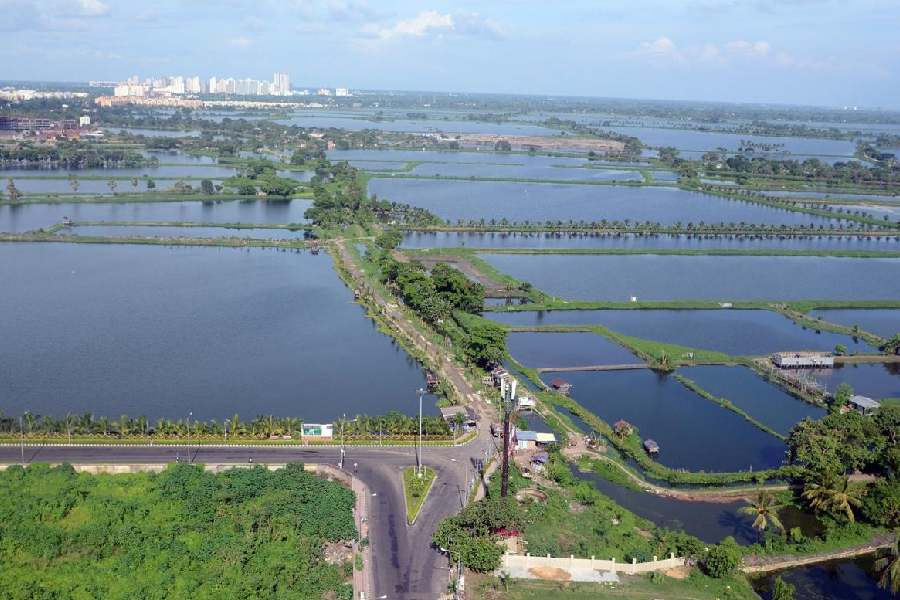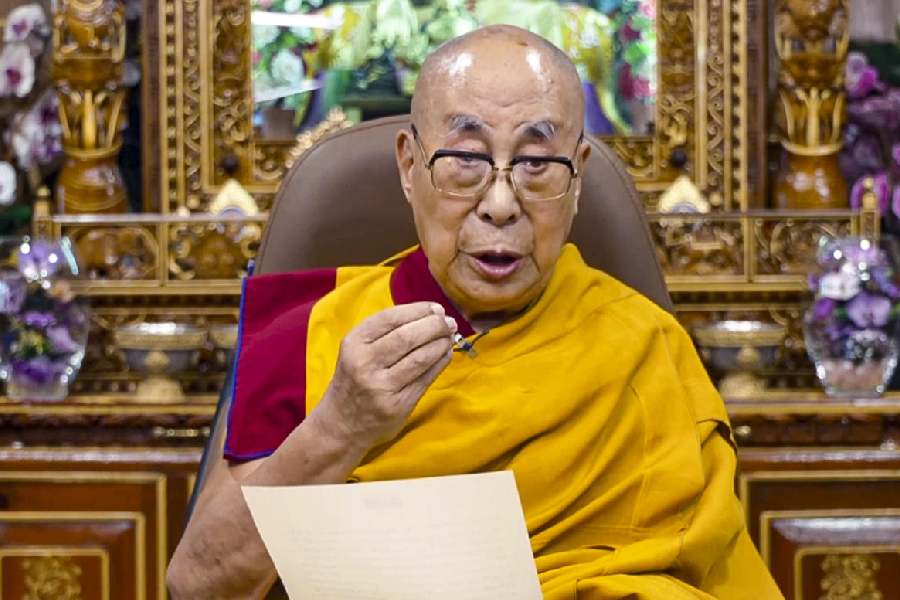Bhagalpur, Dec. 26 :
The excavation of the ruins of the ancient Vikramshila University, 47 km from here, may shed new light on the medieval seats of learning.
Evidence unearthed by the Archaeological Survey of India (ASI) since 1997 has already relegated Nalanda University to the second position in terms of size and vastness. ASI experts said if the details of the excavated ruins were mapped, it would would surpass all other ancient universities.
To boost the tourism potential of the site, the ASI has sought corporate help. The state government has also sanctioned Rs 5 lakh for the purpose. Vikramshila World University, as it used to be known during the early Hindu period, was spread over two villages, Bateswarsthan and Antichowk, in Kahalgaon subdivision covering an area of 6 square km. The area, prior to excavation, was covered by dense forests.
The nondescript villages became a hub of activity since archaeologists began visiting the site three years ago and subsequently set up camps.
Superintending archaeologist of the ASI, Patna circle, K.K. Muhammed told The Telegraph, ?Vikramshila is the biggest-ever university to have been excavated so far. It pushes down the much- acclaimed Nalanda University to the second position.
?The protected area of Nalanda is 80 acres whereas Vikramshila is spread over 100 acres,?? Muhammed said. Vikramshila, according to Muhammed, bears striking resemblance to Nalanda as there is a network of ?hidden walls, temples and libraries?? deep within the bowels of the earth.
He said financial constraints were impeding excavation work at both the universities.
ASI sources said the ruins unearthed would be displayed in a special museum adjacent to the site.
Established by Dharampala (783-820 AD) of the Pala dynasty, which ruled the central province of Bengal, the Vikramshila University flourished at the same time as Nalanda.
So far, the ASI has managed to excavate 208 rooms, each measuring 4.15 square metres.
The outer walls have 20 circular and 25 rectangular rooms measuring 9 square metres, spaced at a distance of 21 to 23 metres. Besides, 12 underground cells with brick arches used for meditation were also dug up by the ASI.
A rough layout of the site indicates that the university had a central chaitya (16.25 metres in height).
It was ?cruciform in shape having four shrine chambers with anti-chambers in cardinal direction.? The plan, according to L.P.R. Mohnani, is similar to the Somapura Mahavira stupa in Rajsahi district of Bangladesh. Of the six gates mentioned in history, the ASI has been able to locate only three.
The Vikramshila University was the only institution which conferred degrees on successful candidates at open convocation ceremonies. The degrees were awarded by the king. The practice was unheard of in Nalanda. The university, which had close links with Tibet, also followed Lamaism, introduced by Dipankara Srijana, a scholar from Bengal.
 Friday, 04 July 2025
Friday, 04 July 2025









